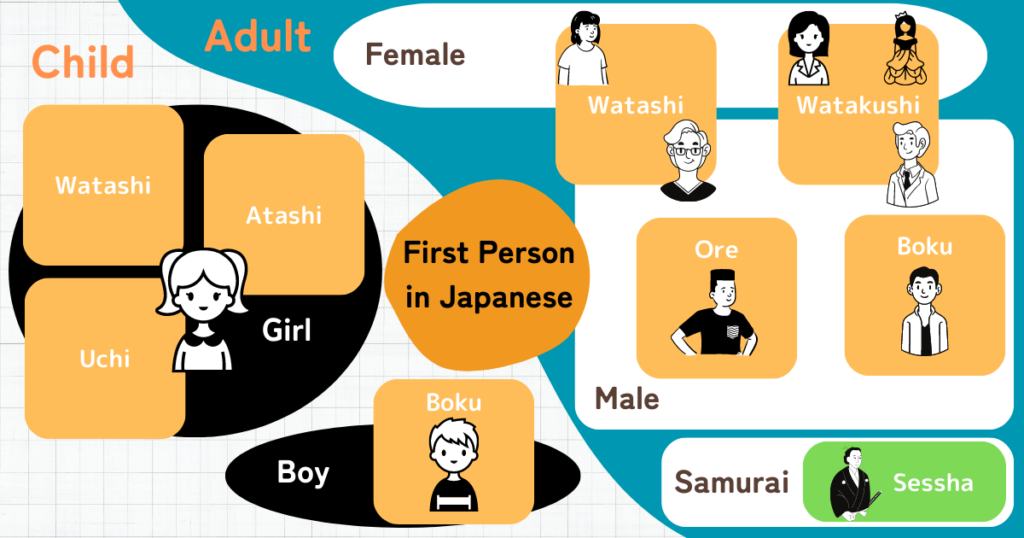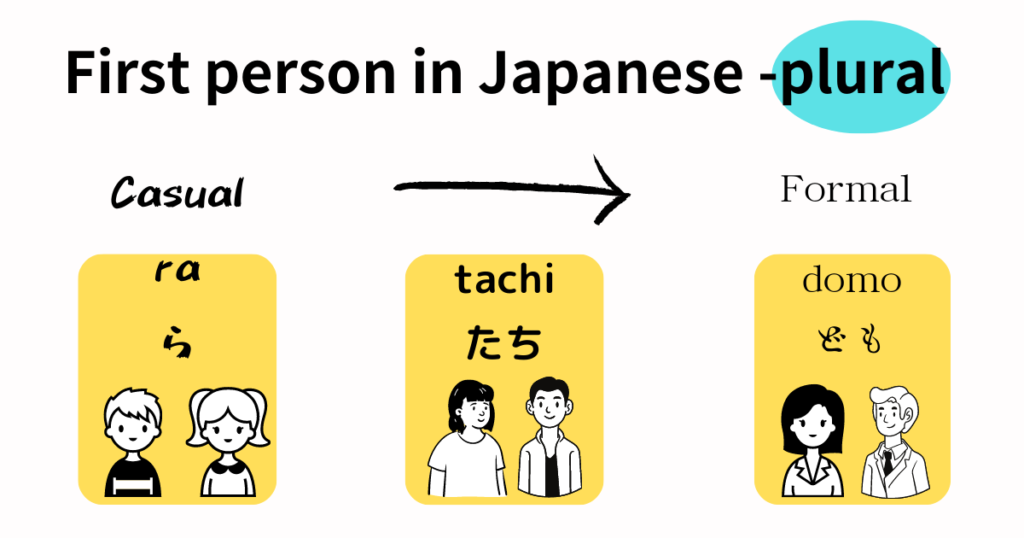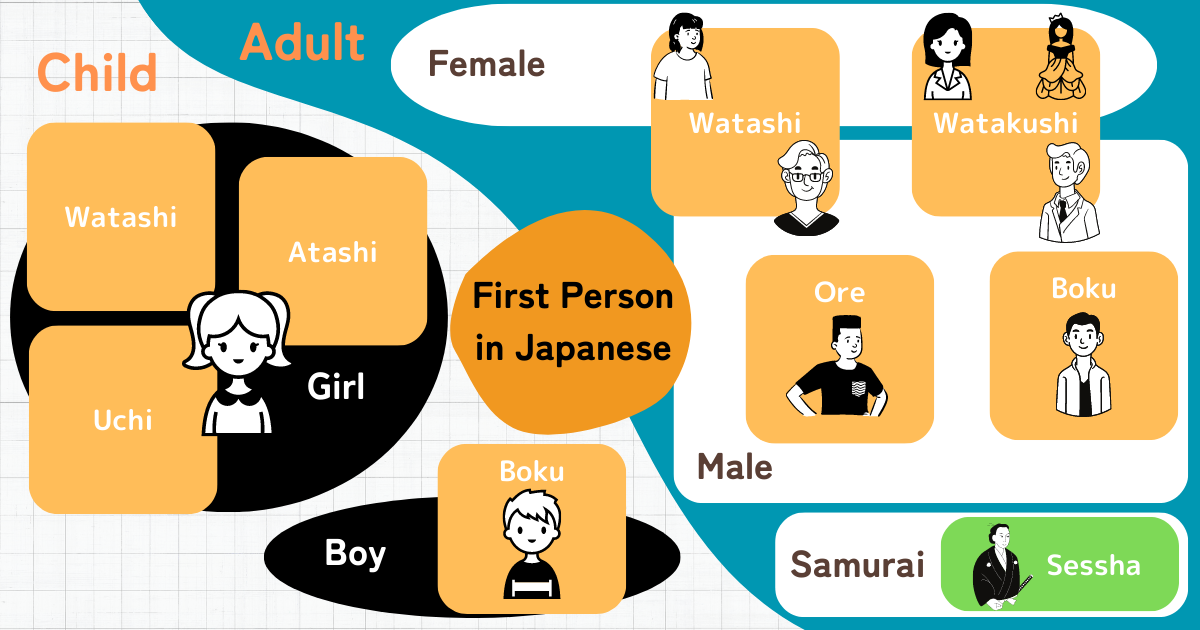
Hi, I’m Kofumi (@kofumi_Ani_Japa).
Do you know how many different ways to say ‘I’ in Japanese?
I’m sure you are most likely to know this one ↓
Yes, ‘Watashi‘ is the ‘first’ first person pronoun you would learn when you start learning Japanese.
But do you know how many more different ways to say ‘I’ depending on your gender, age, where you are from or the situation you are in? There is nothing wrong with saying ‘Watashi’, but the knowledge of other versions would help understand Japanese deeper.
Fun Quiz! – with yes no chart
Well, this is the place where you should be able to learn Japanese in a fun way!
So, why don’t we start this Japanese lesson with this Quiz?
- Q1
- Are you an adult or a child?
Let’s look at more details of each pronoun in Japanese!
Hopefully, you managed to find out how to say ‘I’ for yourself by taking the quiz.
I’d also like to explain a little bit more about each first person pronoun.

Watashi わたし
Like I mentioned earlier, this is the most famous Japanese word to learn first. If you consider yourself as a female, this is the best one to use for ‘I’.
If you are a male, you can still use ‘watashi’. However, it may sound more formal, so I don’t think I’ve ever heard small boys using ‘watashi’ for themselves.
Watakushi わたくし
If you are a princess, yes, this is the one to use. ‘Watakushi’ appears to be very formal, so you would like to use it when you are at work, when you are having a job interview, or perhaps when you are giving a speech in public.
Boku ぼく
If you are a little boy, ‘Boku’ is the most common first person pronoun to use. But this is also a good one to use if you are a grown up male as well. A lot of grown up male adults in Japan use ‘Boku’ for ‘I’.
Ore おれ
‘Ore’ is for a male to use as well. What’s the difference between ‘Ore’ and ‘Boku’?
‘Ore’ definitely has a more casual tone than ‘Boku’, so if you call yourself ‘Ore’ you may give a slightly rough impression to the audience. But I believe that this is a very common speaking word for Japanese men to use as well.
Also, I would like to mention that ‘Ore’ has got a more masculine feeling to it. In Japan, some boys suddenly decide to call themselves ‘Ore’ when they are in their teens.
This is totally up to you to decide how to call yourself ‘Ore’ or ‘Boku’. Either sounds perfectly fine to me. However, I feel it is inappropriate to use ‘Ore’ in formal conversation.
Sessha せっしゃ
Sessha was used by Samurai in the past, so unless you are watching the period drama in Japan you wouldn’t hear this word. But of course, if you regard yourself as Samurai you should use ‘Sessha’!
Uchi うち
‘Uchi’ can be used by small girls or young female adults from the Kansai area.
Atashi あたし
Some little girls might call themselves ‘Atashi’, as they sometimes struggle to pronounce ‘Watashi’.
◯◯ tachi, ◯◯ domo, ◯◯ ra, -plural
Lastly, I’d like to mention the first person form for plural.
The suffix ‘tachi’ is used as a plural form of first person pronoun, so you would say ‘Watashi tachi’, ‘Watakushi domo’, ‘Boku ra’ instead of ‘We’ depending on the situation or your gender.
What’s the difference between these suffixes?
‘Tachi’ is the most common one used and ‘domo’ is more formal. So you can say ‘Watashi domo’ or ‘Watakushi domo’, but not ‘Ore domo’ or ‘Boku domo’.
Whereas, ‘ra’ is used more casually, so people don’t say ‘Watakushi ra’.
Ummm, it’s getting more complicated.
So, I made the illustrated chart for you to visualise how to use first person pronouns in Japanese!

Lastly
Thank you very much for reading till the end of the first lesson! Hope you enjoyed it and found it useful.
I also make short animation videos to learn Japanese characters on YouTube. If you’d like to learn Japanese characters in a fun way, please visit and subscribe to my channel ‘Animated Japanese‘!

See you in the second lesson shortly.



コメント